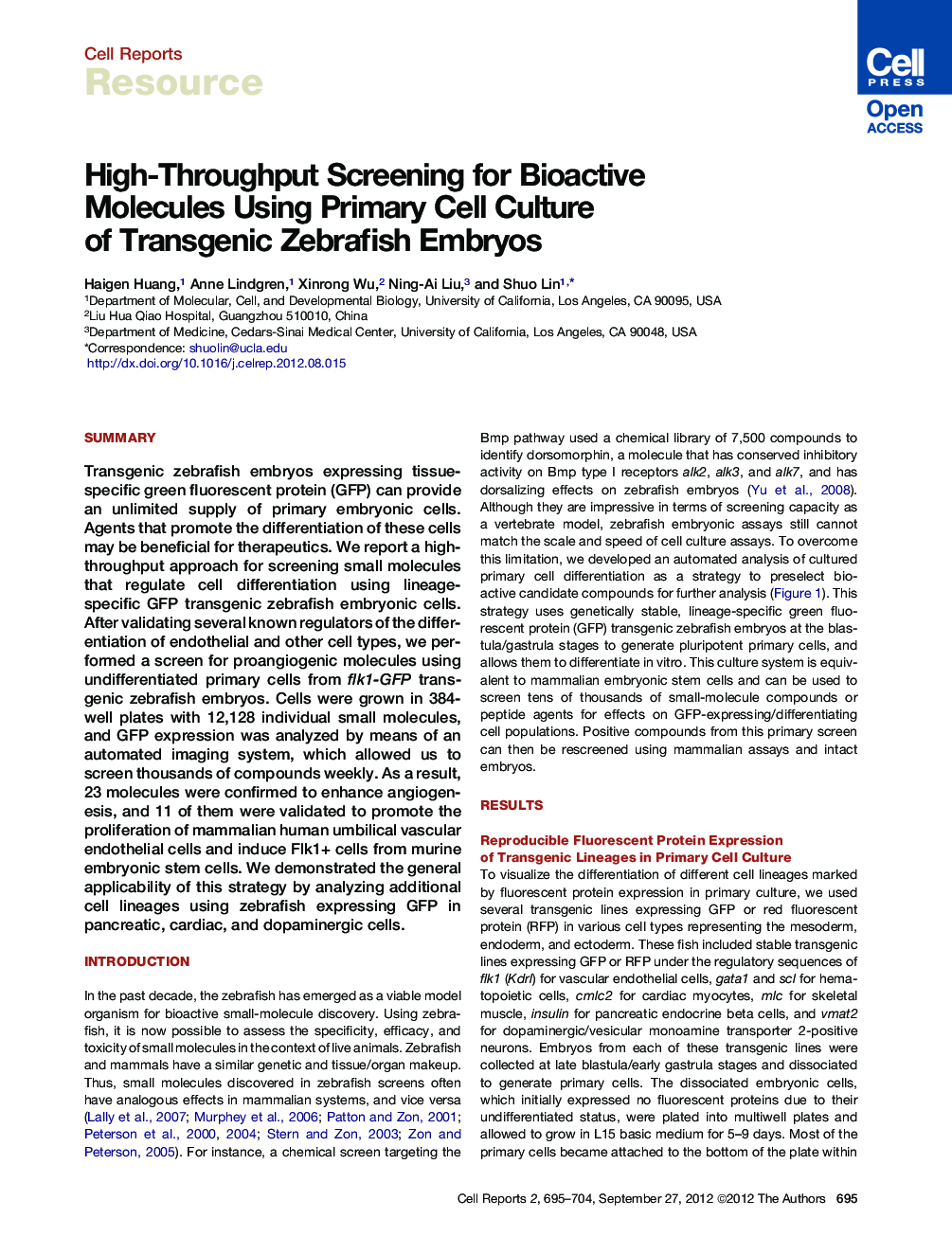| Article ID | Journal | Published Year | Pages | File Type |
|---|---|---|---|---|
| 2041655 | Cell Reports | 2012 | 10 Pages |
SummaryTransgenic zebrafish embryos expressing tissue-specific green fluorescent protein (GFP) can provide an unlimited supply of primary embryonic cells. Agents that promote the differentiation of these cells may be beneficial for therapeutics. We report a high-throughput approach for screening small molecules that regulate cell differentiation using lineage-specific GFP transgenic zebrafish embryonic cells. After validating several known regulators of the differentiation of endothelial and other cell types, we performed a screen for proangiogenic molecules using undifferentiated primary cells from flk1-GFP transgenic zebrafish embryos. Cells were grown in 384-well plates with 12,128 individual small molecules, and GFP expression was analyzed by means of an automated imaging system, which allowed us to screen thousands of compounds weekly. As a result, 23 molecules were confirmed to enhance angiogenesis, and 11 of them were validated to promote the proliferation of mammalian human umbilical vascular endothelial cells and induce Flk1+ cells from murine embryonic stem cells. We demonstrated the general applicability of this strategy by analyzing additional cell lineages using zebrafish expressing GFP in pancreatic, cardiac, and dopaminergic cells.
Graphical AbstractFigure optionsDownload full-size imageDownload as PowerPoint slideHighlights► Primary embryonic cell cultures from lineage-specific zebrafish lines respond to exogenous chemical stimuli ► High-throughput screening in primary cells can identify proangiogenic chemicals ► Proangiogenic compounds identified from zebrafish screen can be validated in vivo and in mammalian cells
